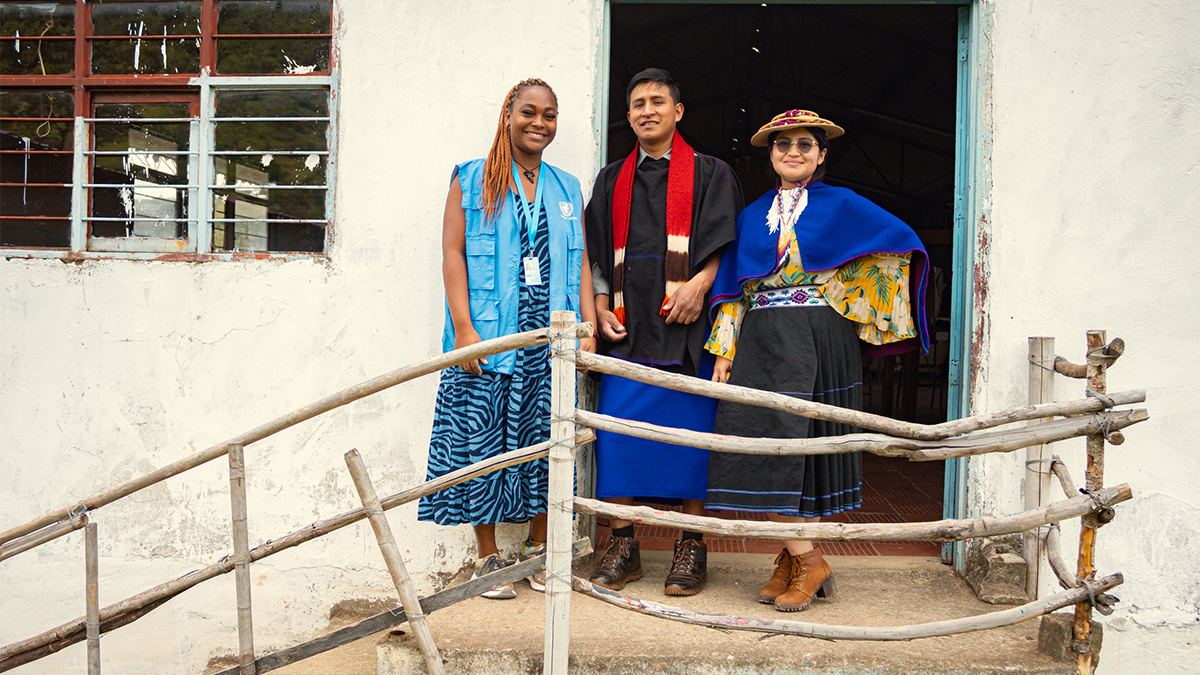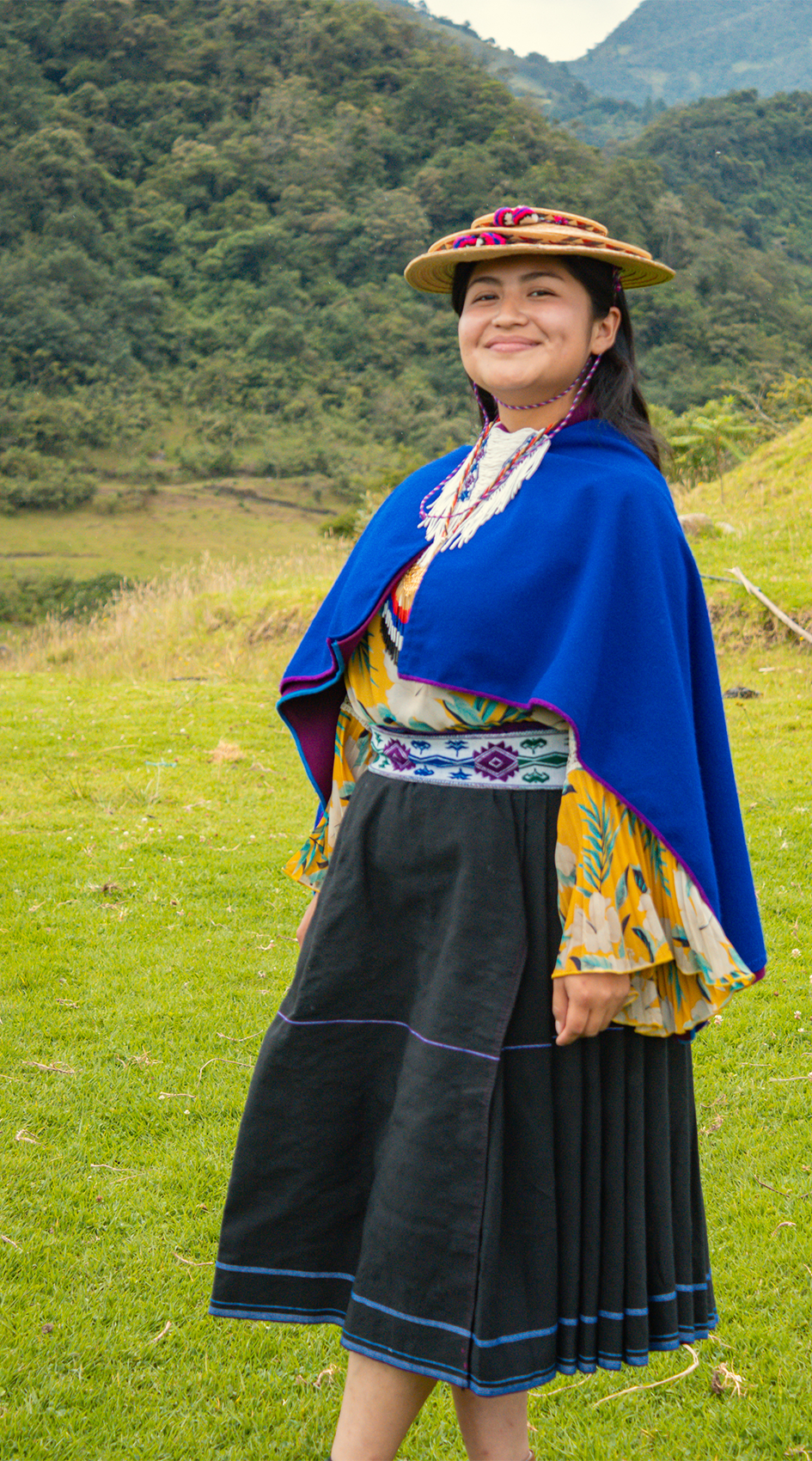
As part of “UNiTE to End Violence against Women”, the UN Secretary-General’s campaign for 16 Days of Activism against Gender-Based Violence 2024, the UN Office on Drugs and Crime (UNODC) is showcasing its efforts around the world to end violence against women and girls.
This is the story of two indigenous women in rural Colombia who recently became aware that human trafficking poses a serious threat, undermining the development potential of their community.
Against a sea of dense green foliage in Cauca, one of Colombia’s most diverse territories, Rossy Aranda and Mariana Velasco’s blue and red dresses stand out.
The indigenous community to which they belong, the Misak, use blue to evoke their respect for water and red to honor their historical struggles to protect their culture and territory.
The symbolism remains relevant today, with the Misak’s region Cauca, in southern Colombia, continuing to grapple with conflict, violence and armed groups. Indigenous reservations, which hold a unique human and historical value, may not appear to be of interest for organized crime. Unfortunately, criminal organizations have identified an opportunity to traffic people – including children and women – among these communities.
To help mitigate the threat, UNODC and the Government of Colombia, based on the early warnings identified by the community, launched an initiative to train indigenous communities on the risks of human trafficking.

Poverty, conflict and forced displacement have made indigenous communities vulnerable to exploitation. In May 2024, the Colombian Supreme Court of Justice upheld one of the first convictions in the country for the crime of human trafficking for purpose of forced labour in the country, finding a woman guilty of transporting a young indigenous woman to the capital (Bogota) to exploit her for domestic servitude.
Yet human trafficking among indigenous reservations has mainly gone unnoticed, in part because Misak children and adolescents face several other challenges within their territories.
“We live in a rural area where there is a shortage of work and resources to buy food,” explains Mariana.
However, according to the Colombian Office of the Ombudsman, Cauca is in a critical state due to the increase in cases of illicit recruitment of children and adolescents. In 2024, Colombian authorities recorded around 159 cases of illicit recruitment in children and adolescents, with 125 of these cases reported in the department of Cauca.
For these reasons, UNODC’s initiative seeks to raise awareness on this issue and promote the involvement of children, adolescents, local authorities and indigenous leaders through culturally adapted educational strategies.

Rossy lives in the indigenous Guambia reservation, located in southeast Cauca, Colombia.

UNODC and the Colombian Ministry of the Interior held multiple prevention workshops in different settlements of the Misak people of Cauca, including the reservations of Guambia and Purace, where Rossy and Mariana live.
The indigenous communities themselves directly participated in the development of the workshop sessions to include their views and realities and to ensure the implementation of effective and culturally relevant strategies to prevent human trafficking in their territories.
The workshops introduce a boardgame inspired by Misak’s worldview. It aims to teach the realities of human trafficking through everyday situations to reflect on the risks and share concerns with trusted people. The game can be played by people of all ages and includes an animated video, audio capsules for community radio stations and graphic pieces to share on WhatsApp.
“In these trainings, we have become aware that human trafficking has been normalized,” says Rossy.
The game has been helpful in reaching out to new audiences about prevention. "It is also important to think about other strategies that capture the attention of young people,” she adds.
This is the first project led by UNODC Office for the Andean Region and Southern Cone that includes educational interventions with indigenous communities to prevent human trafficking. The results of this initiative will allow the development of future strategies with a tailored approach for indigenous peoples in Colombia and the region.